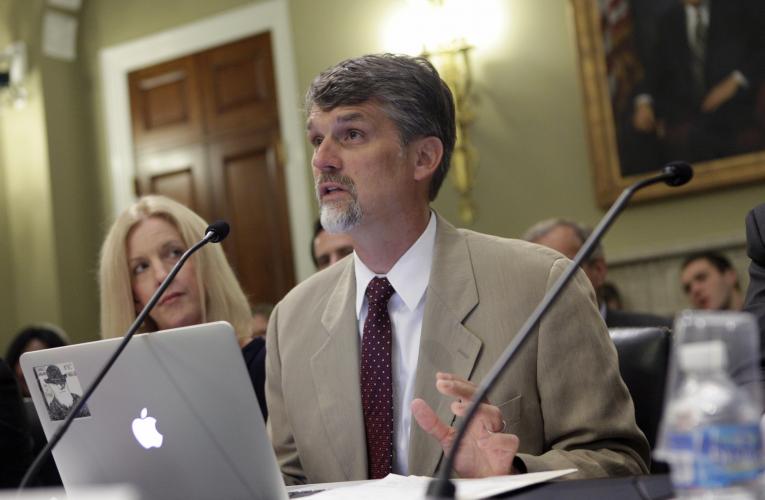Tim Lucas, 919-613-8084, tdlucas@duke.edu
DURHAM, N.C. – Douglas Nowacek, Repass-Rodgers University Associate Professor of Conservation Technology at Duke University, testified before a U.S. House of Representatives subcommittee today (July 14) about the impacts of seismic activity on whales and other ocean life.
His testimony included policy-relevant recommendations for how to reduce the potential harm.
Nowacek, an expert on marine ecology and bioacoustics, presented his testimony to the House Natural Resources Committee’s Subcommittee on Energy and Mineral Resources.
Seismic surveys associated with underwater oil and gas exploration are a major contributor to ocean noise, Nowacek told the committee. Recent technological advances and market forces have led industry to extend the geographic scope of its exploration into once remote areas of the oceans, especially at higher latitudes and into deeper waters.
In some cases, the loud blasts generated by the air guns used to conduct the seismic surveys can be detected underwater more than 2,500 miles away.
Numerous studies have shown that these sound bursts – which can reach 260 decibels and may continue, almost nonstop, for weeks or months on end – can disrupt or harm marine life. Whales, for instance, rely on underwater sound for communication and navigation and to find food and avoid predators. Exposure to repeated loud blasts from a seismic survey can mask the sounds they rely on and lead to stress, disorientation, changes in foraging and nursing behaviors, and, in extreme cases, direct physical damage. At 260 decibels, the noise generated by seismic air guns roughly approximates the noise at “the epicenter of a grenade blast and would easily cause the rupture of the human eardrum,” Nowacek noted.
“The seismic testing permits currently under consideration by the U.S. Bureau of Ocean Energy Management would allow the continuous overlapping firing of seismic airguns along a broad range of the east coast from the New Jersey/Delaware border to central Florida,” he told the subcommittee. “Each survey would discharge its airguns approximately every 10 or 12 seconds, and would operate 24 hours per day. If these permits are granted, ocean animals located in that wide area of the Atlantic Ocean would be exposed to noise levels that are likely to cause impacts and to disrupt essential behavior patterns.”
The cumulative impact of chronic exposure to these sound blasts often far exceeds the projected short-term impacts regulatory agencies currently use to set acceptable sound-exposure levels, Nowacek said. These current standards, he said, are based “on decades-old guidelines.”
To address this problem, Nowacek proposed the adoption of a new “more realistic” metric for establishing a scientifically based threshold at which harm – short-term and cumulative – may occur.
He recommended that more comprehensive monitoring of regional marine populations be required before new seismic surveys can take place, and that the length and geographic scope of the monitoring be expanded.
He also recommended the use of seasonal closures to protect vulnerable species and important habitats, as well as new guidelines requiring companies to justify the size and geographic reach of their intended seismic activity.
You can read Nowacek’s full written testimony here.
You can access an archived webcast of the subcommittee hearing here.
Nowacek has studied the effects of underwater noise on marine mammals and other ocean life for more than 20 years and served for more than 10 years on a panel of independent scientists, convened by the International Union for the Conservation of Nature, to minimize the impacts of offshore oil and gas development on Western Gray Whales. He is the author of nearly a dozen widely cited peer-reviewed papers on the impacts of seismic surveys and other anthropogenic noise, and possible mitigation strategies to reduce it.
###

